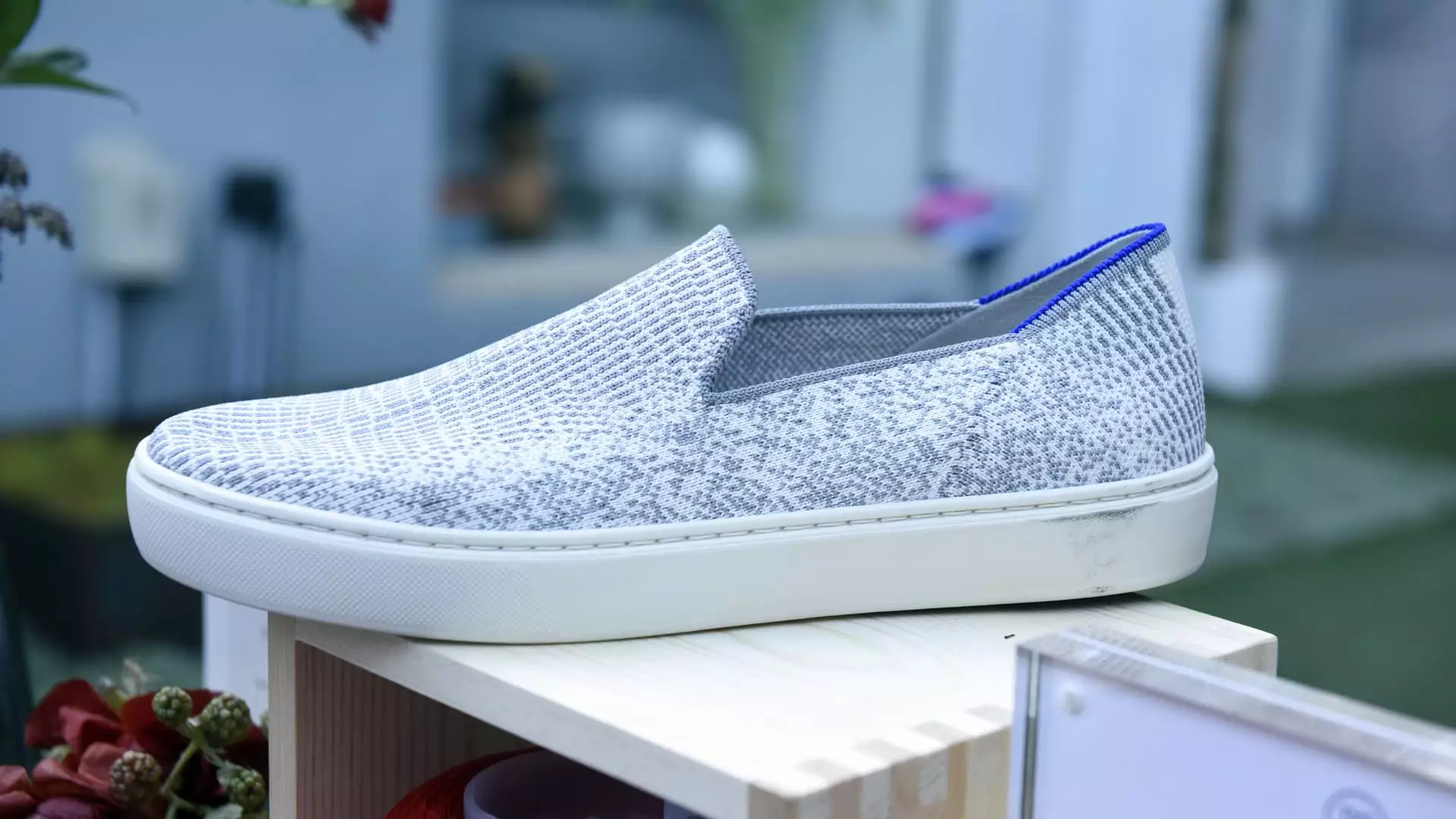The footwear industry has entered a transformative era characterized by dynamic shifts in consumer behavior and retail strategies. As traditional marketplaces adapt to increasingly digital demands, Rothy’s, a direct-to-consumer brand renowned for its eco-friendly footwear, has made headlines by achieving record-breaking sales under the stewardship of retail veteran Jenny Ming. This article delves into Rothy’s recent success while examining the broader implications for direct-to-consumer brands navigating today’s competitive landscape.
In January 2024, Rothy’s appointed Jenny Ming, a prominent figure in retail and a co-founder of Old Navy, as its new CEO. This shift marked a pivotal moment for the company, which had been founded nearly a decade prior by Stephen Hawthornthwaite. Under Ming’s leadership, Rothy’s managed to grow its sales by an impressive 17%, reaching $211 million—the highest in its history. This remarkable growth can be attributed to Ming’s strategic focus on profitability, customer engagement, and revitalizing the company’s product lines to better align with consumer preferences.
Ming’s approach stands in stark contrast to recent trends within the footwear industry, where many direct-to-consumer brands struggled as they leaned heavily into pure e-commerce models without cultivating diversified sales channels. As the landscape matured, Rothy’s recognized the necessity of evolving from online-centric operations to a more holistic approach that integrates both physical retail and e-commerce—a move echoed throughout the industry.
The footwear sector has always been fiercely competitive, but it has taken on new complexities as consumer shopping habits change. While the U.S. footwear market saw negligible growth in 2024 compared to the previous year, Rothy’s managed to flourish by combining its online presence with brick-and-mortar expansion. This dual-channel strategy has proven crucial in attracting customers from various demographics, particularly as more consumers seek tactile experiences before making purchases.
Companies that once thrived on a digital-only paradigm are now taking cues from traditional retail practices. Rothy’s foray into wholesale partnerships with well-known retailers like Nordstrom and Anthropologie exemplifies this shift. Ming’s statement regarding their intention to establish a presence on platforms like Amazon highlights a practical recognition of where customers are shopping and the necessity of meeting them there—a strategy previously dismissed by many digital-first companies.
Profitability Over Valuation
Ming is adamant about a pragmatic approach focused on sustaining profitability over chasing high valuations, which can often lead to unsustainable business practices. Rothy’s journey saw challenges, especially after a substantial investment from Brazilian footwear company Alpargatas that initially boosted its valuation to $1 billion yet coincided with stagnating growth. The introspective shift in leadership has prompted a thorough reevaluation of marketing expenditures and operational costs, aimed at ensuring that resources are allocated effectively to stimulate sales without excess waste.
This focus on profitability is reflected in Rothy’s balanced growth between online and offline sales channels. The shift from a near-total dependence on e-commerce to a more balanced revenue model—where nearly 70% of sales remain online—is testament to the company’s strategic pivot. Ming’s emphasis on understanding customer desires and adjusting offerings accordingly resonates with a emerging trend among retailers.
Bridging Digital and Physical Experiences
The ability of Rothy’s to link digital presence with physical retail locations has reinforced the brand’s strategy. Rothy’s has recognized that providing customers an opportunity to directly engage with their products adds tangible value to the shopping experience. Customers who can interact with the product in-store are generally inclined to form deeper connections with the brand, and as Quanbeck notes, these interactions lead to higher customer lifetime values.
However, initiating physical expansion comes with clearly defined parameters. Learning from past retail expansions that have left some companies vulnerable, Rothy’s has strategically opted for small, profitable stores—26 to date—with plans to expand to 75-100 in the coming years. This measured growth ensures that each new location can effectively contribute to overall business vitality without jeopardizing financial soundness.
As Rothy’s approaches an era of anticipated growth, the brand is poised to build upon its recent successes while maintaining a focus on sustainability and customer satisfaction. Ming has made it clear that while substantial achievements have been recorded, they mark only the beginning of what the company aspires to accomplish. By continuing to calibrate its offerings and channels in response to market demands, Rothy’s is strategically situated to flourish against the backdrop of an evolving retail landscape.
Rothy’s journey under Jenny Ming’s leadership epitomizes the adaptation necessary for survival in the current retail environment. The ongoing blend of direct-to-consumer engagement, physical store expansion, and strategic wholesale partnerships offers a blueprint for other emerging brands attempting to navigate the complexities of consumer preferences in an increasingly competitive market.

